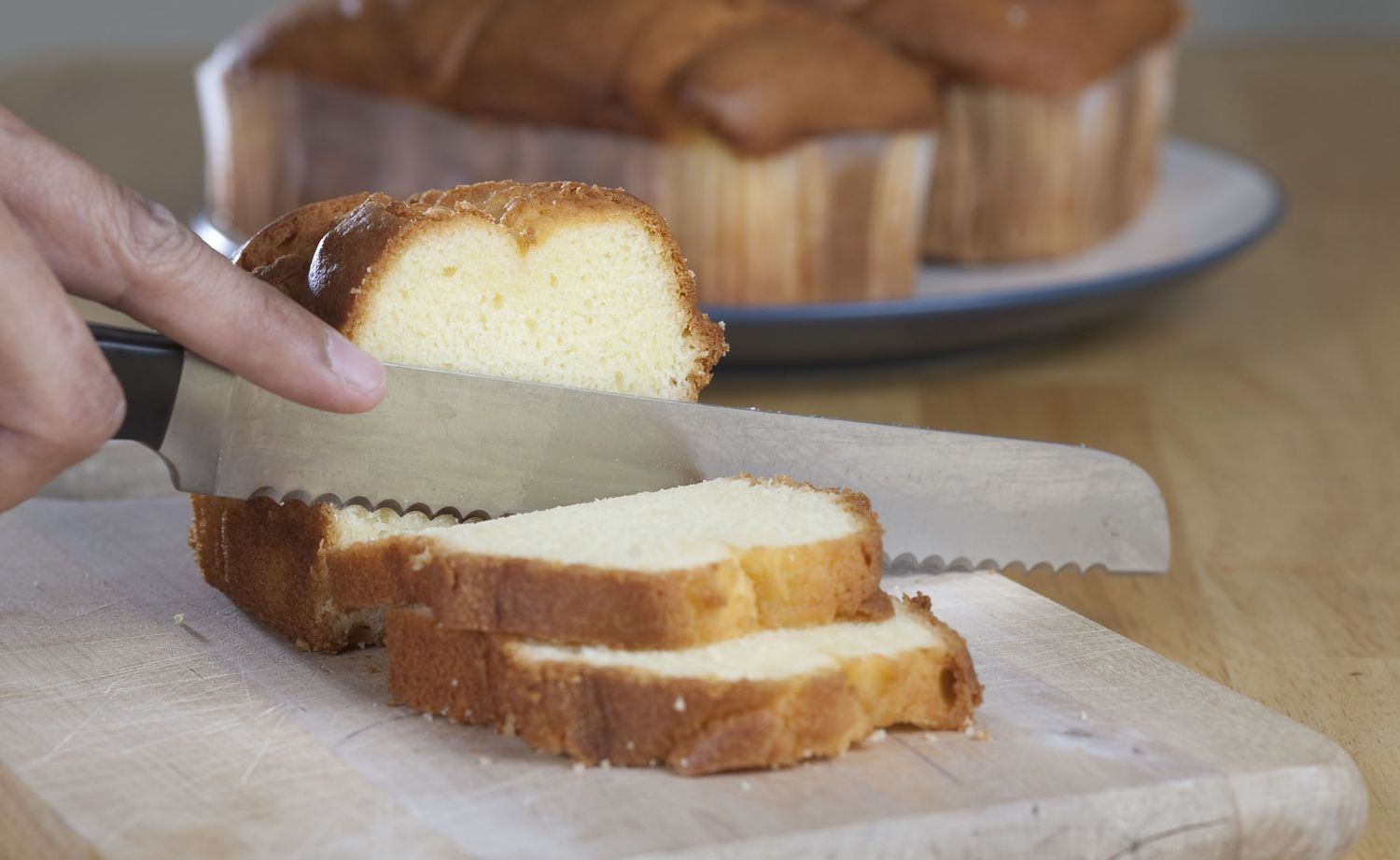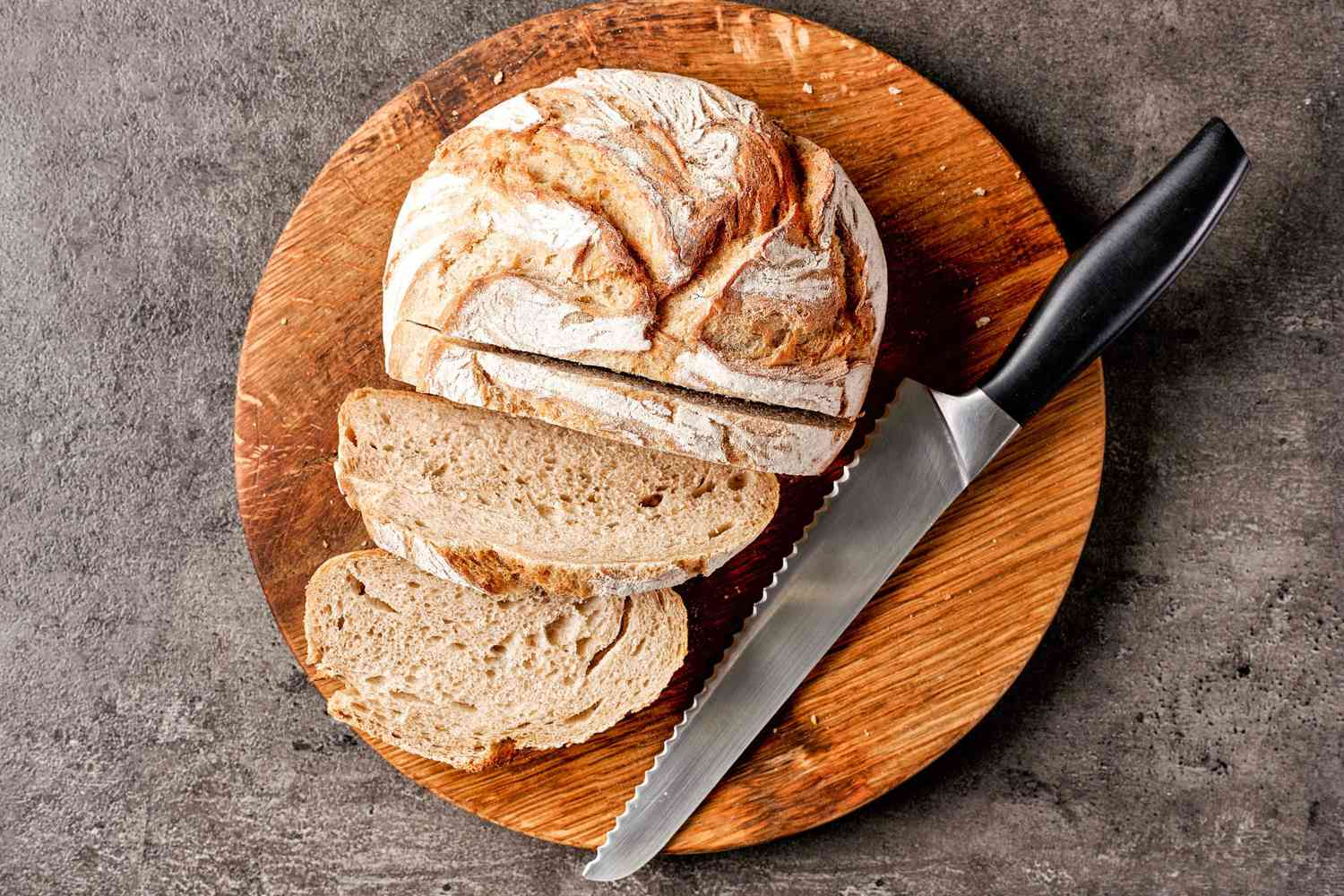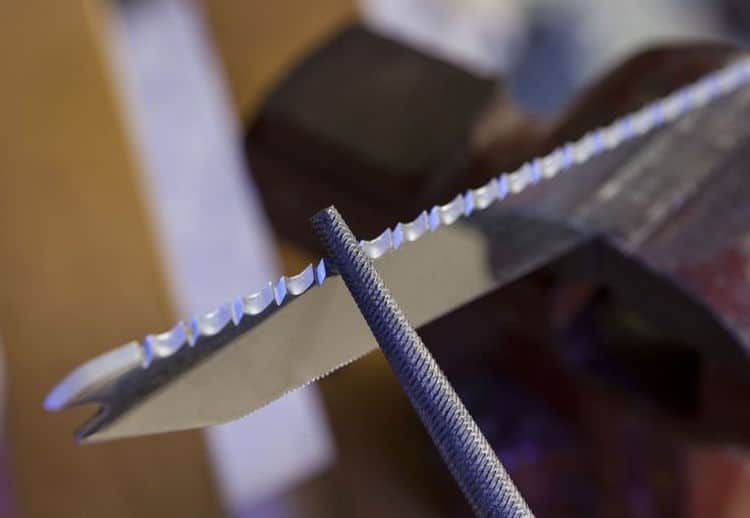Vegan Globetrotter is supported by our audience. When you purchase through one of our links, we may earn a small affiliate commission. As an Amazon Associate I earn from qualifying purchases. Your cost is not affected.
==================
Hey there! Have you ever struggled to keep those serrated knives in tip-top shape? You know, the ones with those teeth-like edges that make slicing through bread a breeze? Well, fear not! We’re diving into sharpening serrated knives. We’ll explore how to sharpen serrated knives—unlocking the secret code to maintain those toothy blades with finesse. So, grab your favorite knife, and let’s slice through the mysteries of serrated knife sharpening together!
What Is a Serrated Knife?

Photo by: Southern Living
Alright, let’s dive into the world of kitchen essentials and the importance of having the right tool for the job – especially when it comes to kitchen knives. Picture this: a serrated knife, your culinary sidekick with a saw-like edge boasting teeth or serrations.
Why does this matter? These teeth turn it into the ultimate superhero for slicing and cutting bread without the usual drama.
So, when facing that loaf of fresh bread, reaching for the right tool, your trusty serrated knife, is like having a secret weapon. Those teeth ensure you can smoothly cut through the crust without turning your loaf into a squished mess.
It can be used on other foods with a tender outer skin and a sturdy inner core. It’s about slicing bread and turning a kitchen task into a breeze with the perfect knife.
Unraveling the Mystery of Dullness in Serrated Knives

Photo by: Martha Stewart
Let’s dig into the world of serrated knives and the key factors affecting their performance:
Serrated Edge Challenges
Be wary when tackling tough tasks with that serrated edge, like cutting on a hard surface like a glass board. The serrations might take a hit, getting chipped or bent, affecting the blade’s effectiveness.
Knife Blade Hits
Oops, the classic mishap – dropping or banging your knife. It’s not just about potential injuries. Those serrations might suffer, bending or chipping and leaving your serrated blade less than razor-sharp.
Sharpening Serrated Knives
Ah, the art of keeping that serrated blade on point and using the wrong sharpener or technique? You might inadvertently damage those serrations during the sharpening process, so handling the sharpening of serrated knives with care is essential.
So, next time you’re navigating the kitchen with your serrated wonder, mind those serrated edges, watch where that blade hits, choose your cutting board wisely, and embrace the finesse of sharpening serrated knives. Your trusty blade will thank you with sharp, precise cuts!
Importance of Sharpening Serrated Knives

Photo by: Work Sharp
Let’s talk about the unsung hero of the kitchen – sharpening serrated knives. It’s not just about keeping things sharp but being a key player in kitchen safety and ensuring your food prep game is top-notch.
You see, just like your regular straight-edged knives, those serrated ones lose their sharp edge over time with all the chopping and slicing action. But here’s the twist – serrated knives are like the daredevils of the kitchen cutlery crew.
Even when they’re a bit dull, they still pull off a decent performance. Why? Well, it’s not just about the sharpness.
The magic lies in those serrations – the high points that hit your food first. These points bring the heat, applying more pressure than your average non-serrated blade. That’s why most serrated knives can make quick work of a tomato’s skin, while others might struggle.
You might be wondering, “Sharper is better,” and you’re absolutely right. So, why bother sharpening a serrated knife?
Enhanced Cutting Performance
Picture this – a sharp, serrated knife with a razor-sharp edge smoothly gliding through tough or delicate foods. The result? Cleaner cuts, and less waste.
Effortless Cutting Experience
A sharp, serrated knife is like a breeze in the kitchen. It requires minimal effort, reducing the chance of slips or accidents. Say goodbye to wrestling with your foods and hello to an enjoyable and efficient cutting experience.
Safety First
Dull serrated knives? They demand more force, upping the risk of slips and injuries. By giving your serrated knives a sharpening boost, you’re minimizing the force needed for cutting, making your kitchen safer with fewer accidents on the menu.
So, there you have it – the why and how of sharpening a serrated knife. It’s not just about keeping things sharp but about cooking prowess and safety and turning your cooking sessions into a smooth culinary adventure.
Unveiling the Secrets of How to Sharpen Serrated Knives for Precision and Safety

Photo by: Knives and tools.ie
Alright, buckle up for the scoop on sharpening a serrated knife and get those blades boasting sharp edges! Here’s the lowdown: your typical knife sharpener won’t cut it because serrated blades are a bit of a unique shape.
Even most electric sharpeners might claim they can handle it, but trust me, they’re only sometimes the precision maestros they claim to be.
Enter the hero of the day – the ceramic honing rod, also known as the sharpening rod. It’s like the secret sauce your serrated blade needs for a sharpness boost.
So, let me guide you through the ropes of sharpening those serrated wonders. Get ready to unlock the art of sharpening serrated knives and make those edges sharp enough to conquer any cutting task.
Right Tools
Let’s dive into the world of sharpening your serrated knife with the ceramic sharpening rod, also known as the ceramic rod. It’s like the unsung hero of Blade Care, and yeah, the names can get a bit confusing, but don’t worry, I’ve got your back.
Picture this ceramic honing rod as the rockstar of the sharpening world. It’s not your average rod, and it’s tougher than your regular steel honing rod.
The cool part? This toughness works like magic, subtly chipping away at the material along the blade’s edge, giving it that much-needed sharpening boost.
Now, here’s the clever part. The shape of the rod is custom-made to nestle right into those serrations of your blade. It’s like a perfect match made in Knife Heaven.
So, grab your ceramic rod, and let’s give your serrated knife the VIP sharpening treatment it deserves, tooth by tooth!
Find the Beveled Side
Check out your knife. It’s got two sides in the game. One’s all flat and chill, but the show’s star is the beveled side.
That’s the side that knows how to cut through things like a champ, and guess what? That’s the side you’ll show some love when it’s time to sharpen it up.
So, watch for that beveled side. It’s the secret sauce of your slicing success!
Gently Guide the Sharpening Rod Through Each Serration
No quick fixes here, my friend – you’ve got to take it section by section between those serrations. Do a thorough job now, and you’ll be cruising without worries for a good while.
Here’s the game plan:
- Grab that honing rod, and let’s get to work.
- Place it flat against the beveled edge, ensuring the correct angle is locked in.
- Keep the knife steady, now.
- Glide the rod through the gullet toward the cutting edge, hugging that bevel the whole time.
Repeat the dance until all those gullets are sharp and ready to roll. See? Sharpening serrated knives is a bit of a slow dance, but with the right moves – correct angle, steady hand, and a little patience – your knife will be slicing like a champ!
Smooth Out Any Burrs
As you work your magic sharpening those serrated knives, you’re bound to encounter these tiny metal pieces, often called burrs. Now, don’t let them linger on the flat side of your knife.
Grab a whetstone (that stone block you dab with water or oil) or a piece of fine-grit sandpaper. Take the flat end of your knife and give those metal pieces a run for their money.
Before you know it, your knife will emerge from the burr-removing dance with a sharp edge, ready for any slicing task that comes its way.
How Often Should You Sharpen Your Serrated Knife Blade?

Photo by: almafuerte.gov.ar
Here are a few laid-back tips to help you figure out when it’s time to show some love to your trusty serrated sidekick:
Don’t Overdo It With the Sharpening
Here’s the beauty of serrated knives. They don’t grind against the cutting board as much as other kitchen knives. It’s a win-win situation. This means you won’t have to sharpen them as often, and your cutting board won’t get scratched.
Only grab that sharpening gear when your serrated friend feels dull. If you’re not slicing up a storm regularly, you might only need to give it a sharpening touch-up every few years.
Trust the Bread Test
Feeling uncertain about your serrated knife’s sharpness? It’s time to test it out on some bread. If you’re creating a crumb explosion rather than a clean cut, it’s a sign that your knife is asking for a sharpening session.
Trust the bread, and you’ll keep that serrated blade slicing like a champ!
Buy a quality serrated knife. Aim for the good stuff. Go for a high-carbon steel beauty. Why?
Here’s the deal. It’s like the gift that keeps giving. These quality serrated knives hold onto their sharp edge way better than those cheaper counterparts that seem to give up the ghost too soon.
You won’t be stuck sharpening your quality serrated knife every other day. Now, that’s what I call a sharp investment!
Here’s an additional video on how to sharpen serrated knives
How to Sharpen a Bread Knife | Serrated Knife by: knivesandtools
A Culinary Journey through Sharpening Wisdom
So, there you have it, folks! We’ve journeyed through sharpening serrated knives and covered everything. Also, we’ve learned the significance of safety in the kitchen and how a well-maintained serrated knife can make our culinary adventures smoother and more enjoyable.
Whether you’re a pro in the kitchen or just starting out, here’s the bottom line. Get yourself a top-notch serrated knife, grasp its unique challenges, and dive into the craft of sharpening for precision and safety.
Armed with this knowledge, you’re ready to tackle any loaf of bread or delicate food item confidently.
So, sharpen those serrated blades, enjoy the enhanced cutting experience, and make your kitchen a safer and more efficient space.
Frequently Asked Questions
Is It Safe to Use Electric Knife Sharpeners on My Serrated Knives?
Avoid using an electric knife sharpener on serrated knives. These sharpeners are built for straight-edged knives and might do more harm than good to those handy serrations on your knife. The serrations are the secret sauce that makes your knife a slicing champ.
Here’s the lowdown on why electric knife sharpeners and serrated knives aren’t the best of pals:
- Metal Mishap: Electric knife sharpeners can be heavy-handed, which may result in removing more metal than needed from those serrations. Smaller serrations mean less effective cutting – not what we want.
- Bending Blues: Picture this: your serrations getting bent or chipped by the electric sharpener. Not only does it mess with the knife’s look, but it also takes away from its cutting prowess.
- Uneven Troubles: Electric knife sharpeners might leave your serrations uneven. That’s a double whammy – it makes cutting less effective and increases the chances of your food tearing or crushed.
When Not to Use a Serrated Knife?
Skip the serrated knife when you need precision, like chopping veggies or slicing meat. Go for the straight-edged ones for those tasks. They give you smoother, more controlled cuts.
Now, when tackling something with a tough outer layer and a soft inside, you let the serrated knife shine. Think bread or tomatoes. That’s where it’s the real MVP.
Learn Vegan Cooking With Us!
Discover the various vegan dishes with Vegan Globetrotter. Learn aromatic and appetizing vegan dishes that blend flavor, health, and simplicity. Stay connected and enhance your vegan cooking skills:
- Facebook: Vegan Globetrotter
- Instagram: @_veganglobetrotter
- Pinterest: The Vegan Globetrotter
- Twitter: @VeganGlobetrot
Join our community and explore the wonders of vegan cooking! For more insights into the world of vegan cooking, visit our website: veganglobetrotter.com


Don't miss out
when new recipes and information are added!
Join our newsletter for free recipes,
healthy living inspiration, and special offers
You have Successfully Subscribed!